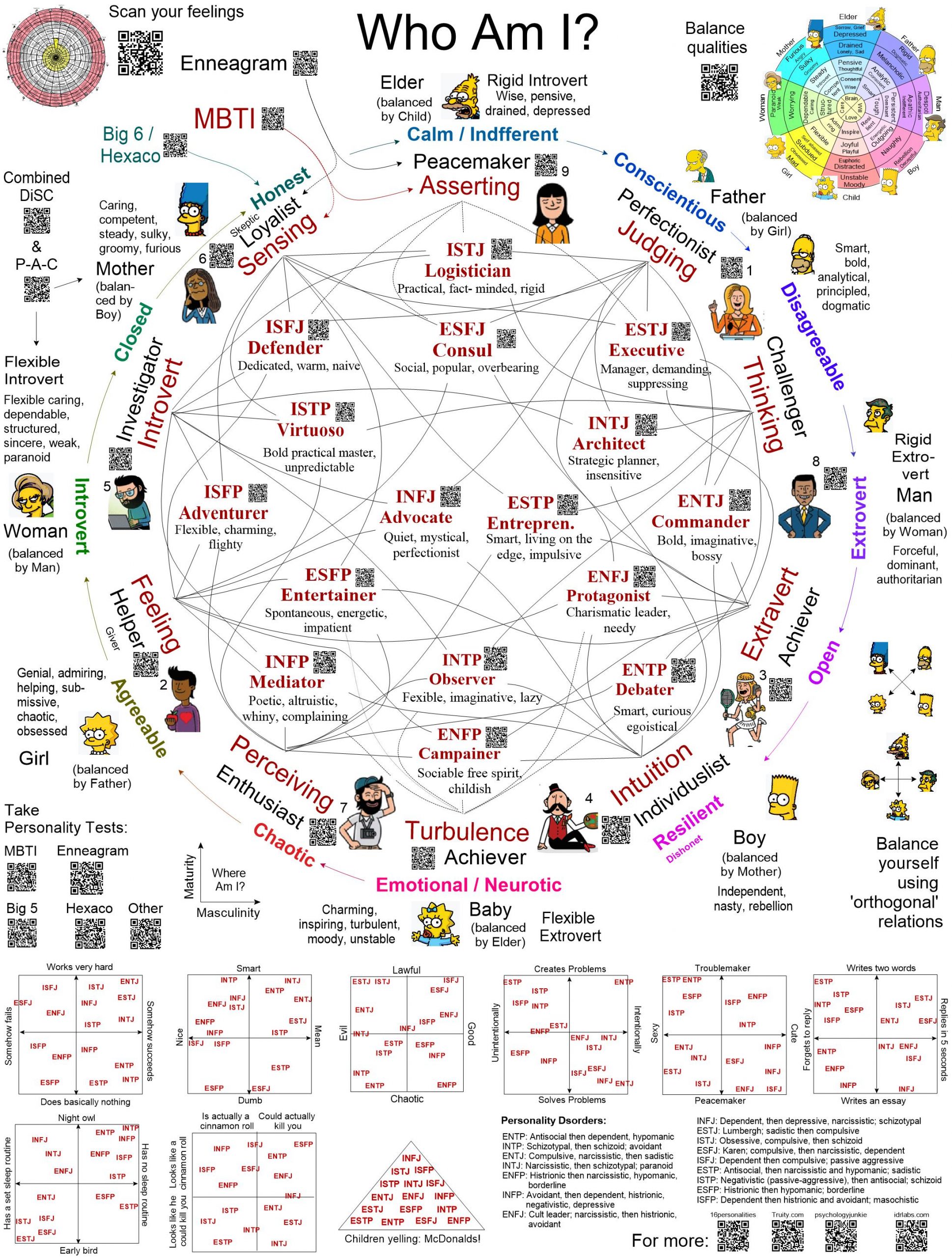
Every word can be related to character traits, like in the latest Atlas version (see the cells’ coordinates with the letters and Simpson’s faces on the margins). It is similar to how every English word has been earlier related to the Valence-Arousal-Dominance scales, and Plutchik’s emotion indices (see e.g., NRC VAD and Emotion Lexicons)
These traits (letters with Simpson’s faces) are further related to the Myers-Briggs and Enneagram’s psycho-types (see the scheme Who Am I?)

In other words, every tagged information can be assigned with personality type(s), as if it was a “live human being”. Note that even a single word can yield a psycho-type, thanks to its linking not only to MBTI, but also to Enneagram.
For example, the word Control is assigned with J (T) from 11(g), indicating Judgement (1 point) and Thinking (0.5 point). This yields one preferred enneagram type (Perfectionist ~ Judgement), one “supplementary” type (Challenger ~ Thinking), and 4 Meyers-Briggs types (ISTJ – Logistician, ESTJ – Executive, INTJ – Architect, ENTJ – Commander)
The word Faith is assigned with five letters – S, I, F from 11(a) and N, E from 13(d). This yields one preferred enneagram type (Helper ~ Feeling), as all other types form “balanced dichotomies” (Investigator ~ Introvert is balanced by Achiever ~ Extrovert, and Loyalist ~ Sensing is balanced by Individualist ~ Intuition). It also yields eight MBTI types (all containing F – ISFJ, ESFJ, INFJ, ENFJ, ISFT, ESFT, INFT, ENFT)
Front window could display only the major type, whereas “secondary” window could show the rest
Higher number of words gives the more accurate / detailed psycho-types, thanks to the larger statistical sampling. For instance, the most important words of Forrest Gump yield:
Faith (11a, 13d) – S, I, F, N, E
Devotion (7d, 11a) – S, I, F, T, (E)
Sincerity (3b, 3c) – S, I, P, Tu, (P, N)
Peculiarity (3f) – Tu, (N)
This gives the following stats: I3, S3, N2, F2, Tu2, E1.5, P1.5, T1, J0, A0, with the following Enneagram’s weights (in parentheses):
Achiever (3.5) = Tu2 + E1.5
Loyalist (3) = S3
Investigator (3) = I3
Individualist (2) = N2
Helper (2) = F2
Enthusiast (1.5) = P1.5
Consider dichotomies: I3 – E1.5, S3 – N2, F2 – T1, P1.5 – J0, Tu2 – A0. This yields the following “strengths”:
Investigator (3 vs. 1.5) = I3 – E1.5;
Loyalist (3 vs. 2) = S3 – N2,
Helper (2 vs. 1) = F2 – T1,
Achiever (2 vs. 0) = Tu2 – A0,
Enthusiast (1.5 vs. 0) = P1.5 – J0.
This also means that the letters I, S, F, Tu, P are the most important, suggesting the MBTI type ISFP-Tu – “turbulent adventurer: flexible, charming, flighty”
Adding the “average-weighted” words with the “high/average” ratio 3/2 yields the same rankings with different coefficients (I3.3 – E1.8, Tu3.3 – A0.6, S3.3 – N3, P2.8 – J0, F2 – T1)
See also:

